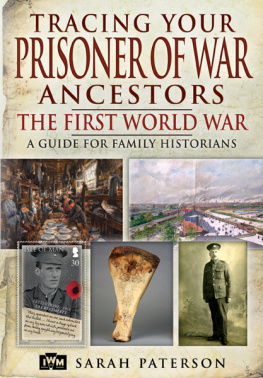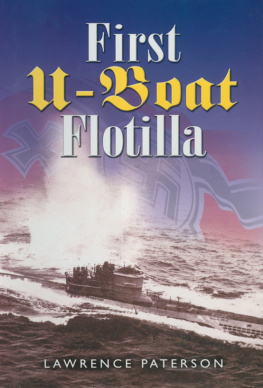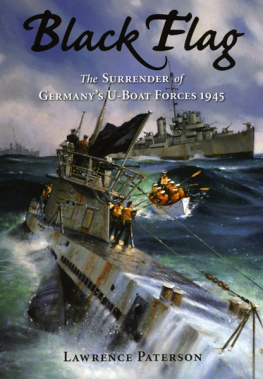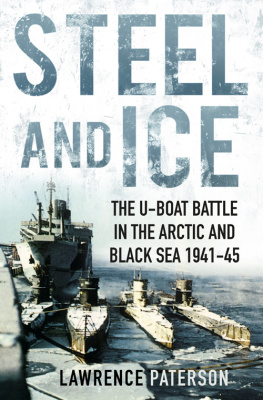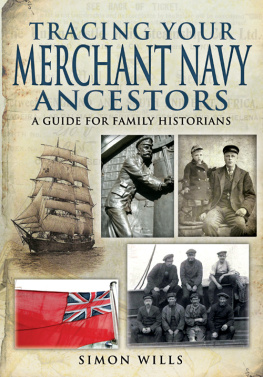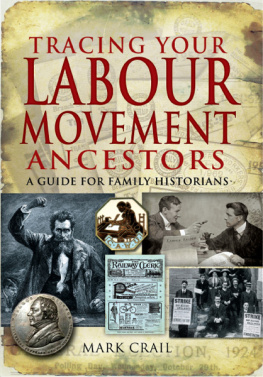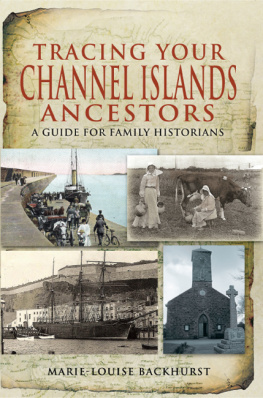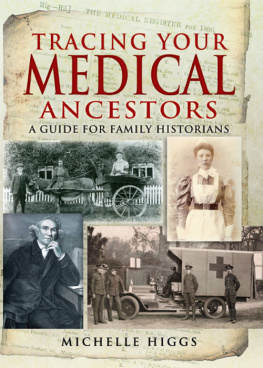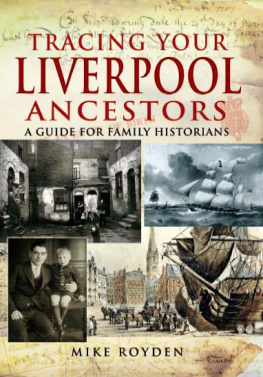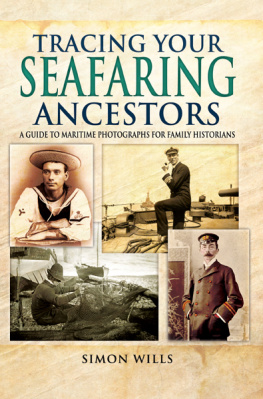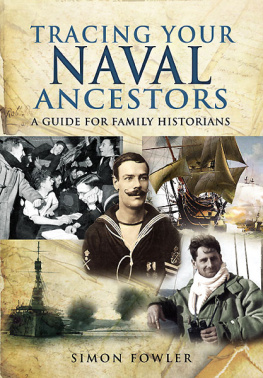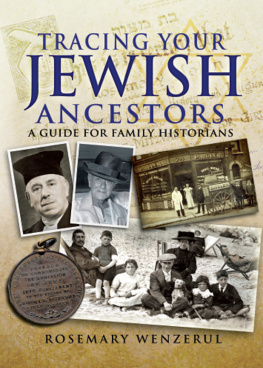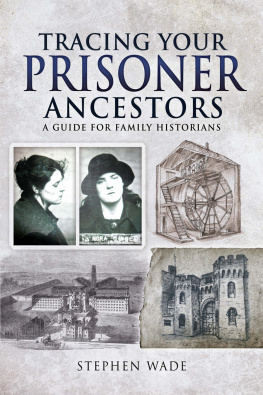FAMILY HISTORY FROM PEN & SWORD
Birth, Marriage and Death Records
David Annal and Audrey Collins
Tracing Your Channel Islands Ancestors
Marie-Louise Backhurst
Tracing Your Yorkshire Ancestors
Rachel Bellerby
Tracing Your Royal Marine Ancestors
Richard Brooks and Matthew Little
Tracing Your Pauper Ancestors
Robert Burlison
Tracing Your Huguenot Ancestors
Kathy Chater
Tracing Your Labour Movement Ancestors
Mark Crail
Tracing Your Army Ancestors
Simon Fowler
A Guide to Military History on the Internet
Simon Fowler
Tracing Your Northern Ancestors
Keith Gregson
Your Irish Ancestors
Ian Maxwell
Tracing Your Scottish Ancestors
Ian Maxwell
Tracing Your London Ancestors
Jonathan Oates
Tracing Your Tank Ancestors
Janice Tait and David Fletcher
Tracing Your Air Force Ancestors
Phil Tomaselli
Tracing Your Secret Service Ancestors
Phil Tomaselli
Tracing Your Criminal Ancestors
Stephen Wade
Tracing Your Police Ancestors
Stephen Wade
Tracing Your Jewish Ancestors
Rosemary Wenzerul
Fishing and Fishermen
Martin Wilcox
Tracing Your Canal Ancestors
Sue Wilkes
First published in Great Britain in 2012 by
P E N & S W O R D F A M I L Y H I S T O R Y
an imprint of
Pen & Sword Books Ltd
47 Church Street
Barnsley
South Yorkshire
S70 2AS
Copyright Imperial War Museums 2012
PRINT ISBN 978 1 84884 501 5
PDF ISBN: 9781783376568
EPUB ISBN: 9781783376582
PRC ISBN: 9781783376575
The right of Imperial War Museums to be identified as the Author of this Work
has been asserted by them in accordance with the Copyright,
Designs and Patents Act 1988.
A CIP catalogue record for this book is
available from the British Library.
All rights reserved. No part of this book may be reproduced or transmitted in any form
or by any means, electronic or mechanical including photocopying, recording or by
any information storage and retrieval system, without permission from the Publisher
in writing.
Typeset in Palatino and Optima by
Phoenix Typesetting, Auldgirth, Dumfriesshire
Printed and bound in England by
CPI Group (UK) Ltd, Croydon, CR0 4YY
Pen & Sword Books Ltd incorporates the imprints of
Pen & Sword Aviation, Pen & Sword Family History, Pen & Sword Maritime,
Pen & Sword Military, Pen & Sword Discovery, Wharncliffe Local History,
Wharncliffe True Crime, Wharncliffe Transport, Pen & Sword Select, Pen &
Sword Military Classics, Leo Cooper, The Praetorian Press, Remember When,
Seaforth Publishing and Frontline Publishing
Cover illustrations, clockwise from top left: Waiting for Dinner in the Huts by
George Kenner ( Kenner Bedford/photo: IWM, ART 17089), Panoramic View of
Ruhleben Prison Camp by Nico Jungman ( IWM, ART 522), Private Charles
Kirby ( the author), Ruhleben ox bone ( IWM, EPH 3802), Isle of Man stamp
featuring Second Lieutenant R F Corlett ( Isle of Man Post Office)
DEDICATION
In memory of my father, Eifion Wyn Roberts, 19372010
CONTENTS
Appendix 1 Quick Guide to Key Resources for Tracing Prisoners of War and Civilian Internees in the First World War
Chapter 1
INTRODUCTION
F ounded in 1917, Imperial War Museums (IWM) has always helped people to discover the wartime or military experiences of family members. For nearly a quarter of a century I have been at the core of the team active in this type of work, and the demand continues to grow. Some aspects of this military genealogy are more difficult and complex than others, and the prisoner of war (POW) experience in the First World War is one of these. There has been a long-felt need for a guide to assist people researching this subject: many records simply have not survived, and it is not as well documented as captivity in the Second World War. I know from experience the type of questions that are frequently asked, and also where people are likely to get stuck. In this book I have concentrated on areas where information is sparse, rather than on other subjects such as escapes, which are well covered in records and literature (but directions to these are given for furthering this research). The book is aimed at those who know little about the subject, but the lists of camps and other information contained in these pages should appeal to anyone interested in POWs and internees in the First World War.
This book deals mainly with the experiences of British POWs and internees held by the Germans and Turks during the First World War. It also covers prisoners and internees held in the United Kingdom. The Quick Guide to Key Resources in provides an instant overview of where records are to be found, with the different chapters going into more detail about what the records contain, and providing useful context through case studies.
Personal experiences assume an enormous importance in the absence of other records, and IWM is a vast repository of these. Most of the case studies in this book are drawn from IWM Collections, and there is a wealth of material available to those who are able to visit the museums research facilities in London. Increasing amounts of material can also be found on the website www.iwm.org.uk and readers are welcome to make enquiries by post, telephone or email.
Many of my colleagues at IWM have been immensely helpful in the writing of this book, and it has resulted in several animated discussions about different aspects of First World War captivity. I am also very grateful for assistance from other experts in this field outside IWM, and to the archives and libraries where I have conducted research. A great pleasure resulting from this has been the contact with the families of the men whose papers and stories are held at IWM, and their permission to include these. Needless to say, any mistakes contained here are mine alone.
Here, the term prisoner of war is taken to mean members of the armed forces captured and imprisoned by an enemy power during conflict, while the term civilian internee is taken to mean a civilian who has been imprisoned by an enemy power. During this period these terms were often used interchangeably, which can sometimes cause confusion. Very few women were interned in the First World War and here all POWs and internees are referred to as men.
The POW experience is almost one of the hidden histories of the First World War. Statistically speaking, few men of the fighting forces were taken captive fewer than 3 per cent of British service personnel serving on the Western Front (the theatre of war with the largest number of British POWs). For most, it would have been a completely alien situation; servicemen may have thought about being killed or wounded on active service, but being captured was probably not a possibility they even considered. There was no training or advice about what to do in the event of being taken prisoner by the enemy (this was one of the lessons learned for the Second World War). This also applied to civilians interned in enemy countries. Approximately 192,000 British and Commonwealth servicemen became POWs. Over 16,000 did not return, and those that did were often reluctant to talk. Their experiences, usually painful, were frequently beyond the comprehension of family or friends, and their own desire to forge a new life or to retreat into the comfort of a former routine has meant that surprisingly little is known about an aspect of the war that had a profound effect on those unfortunate few.
The public perception of the POW experience relates almost exclusively to what happened in the Second World War. Film and television representations such as
Next page
